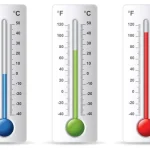Mathematics, at its core, involves complex calculations simplified through specific rules and expressions. Among these, exponents and powers hold a significant position, particularly in algebra, where they simplify repetitive multiplication. Expressing a number as a power of 2 is a frequent necessity, whether in pure mathematics or applied fields. Understanding how to express numbers as powers of 2 not only facilitates simplification but also enhances computational efficiency in various applications.
Exponents and Powers: Core Concepts
Exponents, also referred to as powers, serve as shorthand for expressing repeated multiplication of the same number. For example, multiplying 3 by itself four times, written as:
3×3×3×3=343 \times 3 \times 3 \times 3 = 3^43×3×3×3=34
Here, 3 is the base, and 4 is the exponent. The power indicates how many times the base is multiplied by itself. The result, known as the value of the exponentiation, in this case, is 81. Exponents allow for a more efficient representation of large numbers, and they are widely used in both basic and advanced mathematical operations.
The Power of 2: Simplifying Numbers
Expressing numbers as powers of 2 is particularly important due to its application in computer science, digital systems, and binary calculations. A power of 2 means a number that can be represented as 2n2^n2n, where nnn is a non-negative integer. Some common examples include:
- 21=22^1 = 221=2
- 22=42^2 = 422=4
- 23=82^3 = 823=8
- 24=162^4 = 1624=16
These exponential expressions are foundational in computer algorithms, data storage, and systems relying on binary (base-2) logic.
The formula for Expressing a Number as a Power of 2
To express a number as a power of 2, follow this general approach:
- Check if the number can be expressed as 2n2^n2n, where nnn is an integer.
- If the number is not an exact power of 2, find the closest representation using a combination of logarithmic or bitwise techniques.
For instance, if you wish to express 8 as a power of 2, it is represented as:
8=238 = 2^38=23
Similarly, for non-exact powers, logarithmic functions can be applied to determine the exponent value.
Basic Rules of Exponents
When dealing with powers of 2, it is essential to understand the fundamental rules governing exponents. These rules help simplify calculations and allow for efficient manipulation of expressions involving powers:

- Product Rule:
2a×2b=2a+b2^a \times 2^b = 2^{a+b}2a×2b=2a+b
This rule applies when multiplying two numbers with the same base. - Quotient Rule:
2a2b=2a−b\frac{2^a}{2^b} = 2^{a-b}2b2a=2a−b
When dividing two numbers with the same base, subtract the exponents. - Power of a Power Rule:
(2a)b=2a×b(2^a)^b = 2^{a \times b}(2a)b=2a×b
This rule is used when raising an exponent to another power. - Negative Exponent Rule:
2−a=12a2^{-a} = \frac{1}{2^a}2−a=2a1
A negative exponent indicates the reciprocal of the base raised to the corresponding positive power. - Zero Exponent Rule:
20=12^0 = 120=1
Any number raised to the power of zero equals one.
How to Convert Any Number to a Power of 2
Example 1: Converting 16 to a Power of 2
We know that 16 can be expressed as a power of 2 by finding nnn such that:
2n=162^n = 162n=16
Since 24=162^4 = 1624=16, the expression is straightforward. Thus, 16 is 242^424.
Example 2: Converting 32 to a Power of 2
Similarly, for 32:
2n=322^n = 322n=32
This results in 25=322^5 = 3225=32, so 32 is 252^525.
Utilizing Logarithms for Complex Numbers
For numbers that are not immediately recognizable as powers of 2, logarithms offer an efficient way to determine the exponent. For example, to express 50 as a power of 2, we apply the logarithmic function:
n=log250n = \log_2{50}n=log250
Using this calculation, n≈5.64n \approx 5.64n≈5.64. Therefore, while 50 is not an exact power of 2, it is approximately between 252^525 and 262^626.
Practical Applications of Powers of 2
In Computer Science
Powers of 2 are fundamental in computing due to the binary system, where data is represented as sequences of 0s and 1s. Memory capacity, file sizes, and processing capabilities are typically measured in powers of 2, such as:
- 1 Kilobyte (KB) = 210=10242^{10} = 1024210=1024 bytes
- 1 Megabyte (MB) = 220=1,048,5762^{20} = 1,048,576220=1,048,576 bytes
- 1 Gigabyte (GB) = 230=1,073,741,8242^{30} = 1,073,741,824230=1,073,741,824 bytes
These values are direct applications of powers of 2 in digital systems.
In Algorithm Efficiency
Many algorithms, especially in search and sorting operations, leverage powers of 2 for efficient data management. For instance, binary search, which divides the dataset into halves, operates in O(log2n)O(\log_2{n})O(log2n) time, where nnn is the number of elements in the dataset.
Conclusion
Mastering how to express numbers as powers of 2 is a valuable skill not only in mathematics but also in practical fields such as computer science and digital technology. The ability to simplify expressions using exponents, particularly powers of 2, leads to more efficient calculations and a deeper understanding of exponential growth patterns. The rules of exponents provide a strong foundation for manipulating and simplifying these expressions, enabling their application across a variety of domains.
Also Read:
Fantasy Team Name Generator Football
Interpersonal vs Intrapersonal
Override CSS Style in PrimeVue
Directed Graph in Python LeetCode
Dropdown from a Search Bar in Vue
JavaScript Map of the Keys Method
Centimeters to Feet and Inches
Computer Memory and File Sizes
